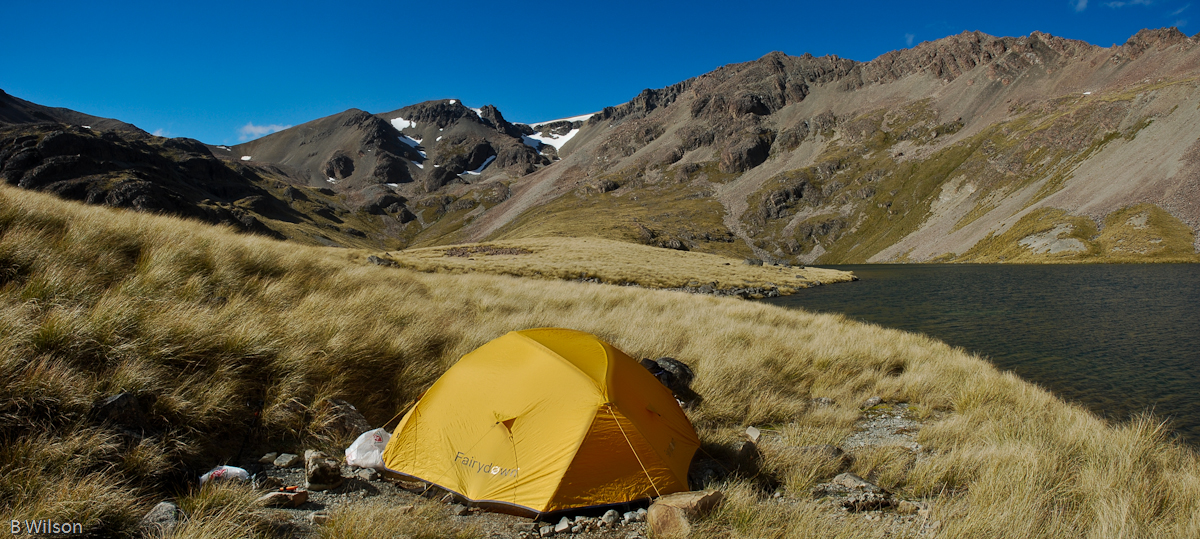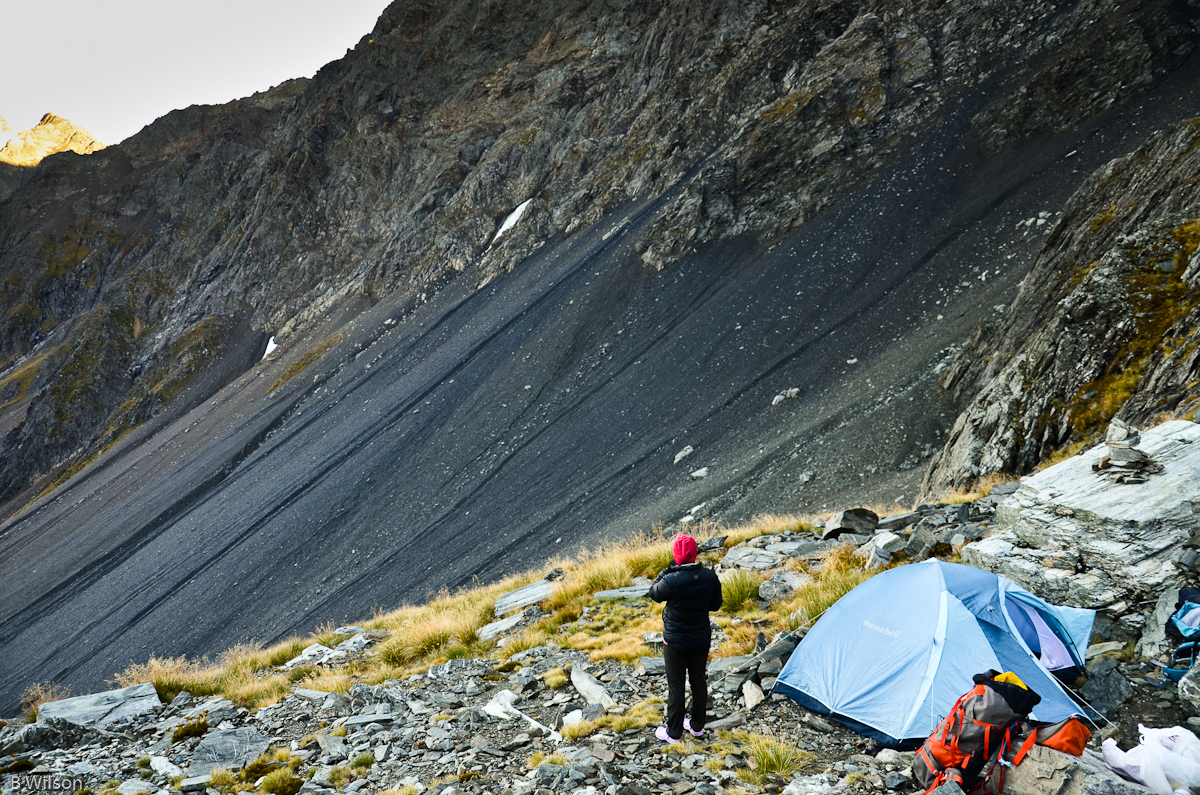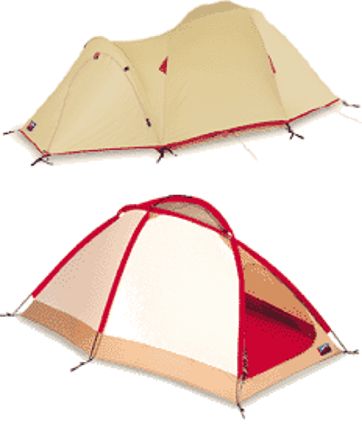Welcome guest, is this your first visit? Create Account now to join.
Welcome to the NZ Hunting and Shooting Forums.
Search Forums
User Tag List
+ Reply to Thread
Results 16 to 30 of 53
-
01-05-2017, 09:17 PM #16Ejected

- Join Date
- Dec 2012
- Location
- HBC, NORTH of Auckland
- Posts
- 5,249
-
-
01-05-2017, 09:21 PM #17
AFAIK sleeved poles are stronger than clipped as they spread the force more evenly, and even if a pole does break then as long as it doesn't rip through the sleeve the tent can mostly stay up. Clips are generally quicker and easier, but not as strong which is why a lot of alpine tents use sleeves instead.
I have sleeved and clipped tents so a bit of experience both ways.
Had this one for 10+ years but it doesn't get used often now:
 Lake Dumb-bell by Ben, on Flickr
Lake Dumb-bell by Ben, on Flickr
Fairydown Assault - solid as alpine tent which has stood up to plenty of 'interesting' weather, but a heavy beast at 3.6kg. 2 sleeved poles with crossovers and one that clips across sideways, then fly over the top. Definitely a bit slower and more awkward to put up, but I still never got the inner very wet before putting the fly over it. After a while you learn the best process to do it relatively quickly. A good feature of this tent (and some others) is having two doors and vestibules - heaps of gear storage and no need to climb over your mate to get out for a piss in the middle of the night.
This one does most of my trips now:
 Campsite below Bruce Peak by Ben, on Flickr
Campsite below Bruce Peak by Ben, on Flickr
Mont Bell Chronos 2 - simple dome structure but with some clever geometry to widen the headroom. Innner clips up to the poles and fly goes over the top, with a decent sized vestibule out the side. Only one vestibule and door, but good ventilation on the other side as well. Not a full 4-season alpine tent like the fairydown, but plenty strong enough for most backcountry use - probably 4 season below the snowline and 3 season above it. It can also work as a lightweight mode with only the groundsheet, poles and fly (from memory around 1.5kg instead of 2.4kg normal weight) for good weather trips, but rain would blow under the edge of the fly using it that way in a storm.
I don't have any photos of them up without the fly that I can find.
Also had plenty of nights in Macpac Olympus and Minarets, fast easy-pitch design (thread poles through sleeves, peg one end down, stretch it out and peg other end) which keeps inner and fly together. Main downside of the tunnel design is being more directional for wind resistance, toe into the wind they're solid but a side wind can buffet them a bit. Plus they don't stay up without pegs/guy ropes to keep tension, the structure isn't self-supporting. Also some people don't like crawling in from the end instead of the side, but thats no big deal really. Minaret is a bit small for two blokes to share unless they're pretty comfortable with each other mind you.Last edited by GravelBen; 01-05-2017 at 09:27 PM.
-
01-05-2017, 09:30 PM #18
Awesome information all.
Sent from my iPhone using TapatalkDan M
-
02-05-2017, 12:09 AM #19Member

- Join Date
- Jan 2017
- Location
- Taranaki
- Posts
- 241
Thanks GB, nice info and pics!
don't have a pic of mine but found something on the web. It's 4+Kg hence desire to get something a little easier to pack around.... even if it is bullet proof. One guy on the web said he could lie on top of it! Dunno if I'd try, too many pies after that pie thread....

-
02-05-2017, 11:11 AM #20Member

- Join Date
- May 2015
- Location
- NZ
- Posts
- 647
-
02-05-2017, 12:34 PM #21
@Nibblet is the weight of them as advertised?
Shut up, get out & start pushing!
-
02-05-2017, 12:36 PM #22Ejected

- Join Date
- Dec 2012
- Location
- HBC, NORTH of Auckland
- Posts
- 5,249
Will throw it on the scales tonight and advise.
And if I'm home early enough will set it up with a few photos along the way
Sent from my SM-G920I using Tapatalk
-
02-05-2017, 04:06 PM #23
I recently brought a Big Agnes UL MTN GLO 2 man tent and love it!! Lots of great features, seems to be made really well....and its bloody lite!! I sold my MSR Carbon 1 man tent as I wanted more room and I think this 2 man tent is even lighter. Plus at first I thought it was a gimmick but I'm absolutely sold on the sewn in LED lights!!
-
02-05-2017, 04:19 PM #24Ejected

- Join Date
- Dec 2012
- Location
- HBC, NORTH of Auckland
- Posts
- 5,249
Sown in lights??? That's pretty choice. What they run on?
-
02-05-2017, 04:52 PM #25
-
02-05-2017, 04:56 PM #26Ejected

- Join Date
- Dec 2012
- Location
- HBC, NORTH of Auckland
- Posts
- 5,249
-
02-05-2017, 05:22 PM #27Ejected

- Join Date
- Dec 2012
- Location
- HBC, NORTH of Auckland
- Posts
- 5,249
Tent
Carbon poles
Pegs
1.6 kg
And the ram on the roof of the tent glows in the dark which is cool but a little creepy the first time

























Sent from my SM-G920I using Tapatalk
-
02-05-2017, 05:32 PM #28Member

- Join Date
- Jan 2017
- Location
- Taranaki
- Posts
- 241
far out! Better coverage than the website!
Thanks Nibblet.
-
02-05-2017, 05:35 PM #29Ejected

- Join Date
- Dec 2012
- Location
- HBC, NORTH of Auckland
- Posts
- 5,249
-
02-05-2017, 06:02 PM #30Member

- Join Date
- Jan 2017
- Location
- Taranaki
- Posts
- 241
I take it you ordered direct? No local outlet? Any hassle on shipping?
cheers
Similar Threads
-
Ultralight tents
By MSL in forum Gear and EquipmentReplies: 14Last Post: 30-09-2015, 09:52 PM -
Lightweight tents Luxe tents
By phillipgr in forum Gear and EquipmentReplies: 22Last Post: 10-09-2014, 07:44 PM
Tags for this Thread
Welcome to NZ Hunting and Shooting Forums! We see you're new here, or arn't logged in. Create an account, and Login for full access including our FREE BUY and SELL section Register NOW!!





 38Likes
38Likes LinkBack URL
LinkBack URL About LinkBacks
About LinkBacks





 Reply With Quote
Reply With Quote


Bookmarks